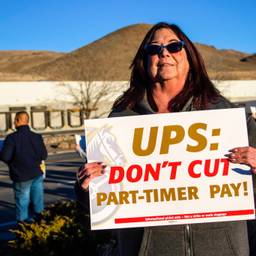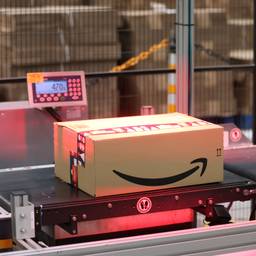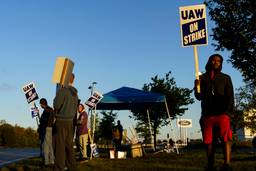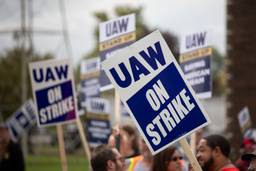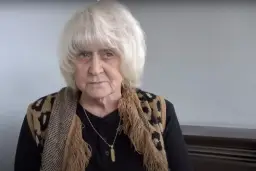UPS Teamsters Have Authorized a Strike. What Comes Next?
The clock is ticking.
Teddy Ostrow and Ruby Walsh
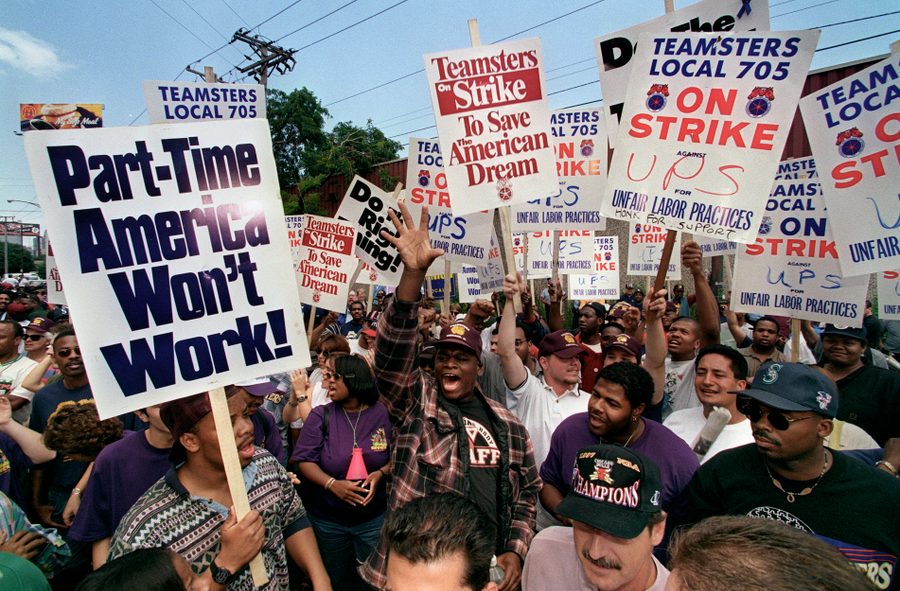
Read the full transcript below.
The results are in: 97% of UPS Teamsters voted to authorize a strike if their demands are not met by August 1. Local unions around the country will practice picket lines starting next week. The clock is ticking.
In this episode, we’ve got a two-parter. First, an update on the contract campaign and negotiations, which have moved onto big-ticket economic items this week. UPSers across the nation tell us why they voted in favor of strike authorization. Local 623 secretary-treasurer Richard Hooker Jr. breaks down the vote and a major tentative agreement: air conditioning in the package car. Greg Kerwood of Local 25 returns to the show to explain why the Teamsters and the broader labor movement need a strike.
Next, long-time organizer and the Executive Director of In These Times Alex Han gives us a crash course on the threads of labor militancy over the past two decades. Alex breaks down the political, social, and organizational legacies of the labor movement between 1997, the last time UPSers struck, and 2023, when they may strike again in much larger numbers. At the center of our conversation: the Chicago Teachers Strike of 2012.
We often hear that COVID-19 pushed workers over the edge, that the widespread death and disease was the viral spark for a new labor upsurge in the United States. But according to Alex, the seeds for this moment were sown over the last twenty years.
This transcript has been edited for length and clarity.
Alex Han: There’s obviously a lot to be said about the impact of the pandemic. But these things were all in motion long before the pandemic reared up. These things were going to be on a collision course.
Teddy Ostrow: We often hear that COVID-19 pushed workers over the edge. Indeed, you’ve probably heard it on this show. That the widespread death and disease was the viral spark for a new labor upsurge in the United States.
We’ve seen the impact of Amazon and its relationship and stranglehold to some degree on the logistics and delivery chain. That was something that was supercharged by the pandemic, but the outlines of that impact were very clear beforehand.
History, in other words, didn’t disappear after 2020. The seeds of our moment were planted far earlier, and there’s no better time than now to begin tracing the roots.
Hello my name is Teddy Ostrow. Welcome to the Upsurge, a podcast about UPS, the Teamsters, and the future of the American labor movement.
This podcast unpacks the unprecedented labor fight this year at UPS. In July, the contract of over 340,000 UPS workers will expire and if those workers strike, which is a real possibility, it will be the largest strike against a single company in US history.
The Upsurge is produced in partnership with In These Times and The Real News Network. Both are nonprofit media organizations that cover the labor movement closely.
And now our short episodic plea: We are a listener-funded podcast. We cannot do this work without you. We are currently in a patron drive right now. We had a goal of 200 monthly supporters by July. Doesn’t look like we’re gonna make that. We are at 72, which means this show is unsustainable. Hopefully we can get to 100 patrons by July but that depends entirely on your support. The next 21 people to sign up to our Patreon will get a free one-year In These Times subscription.
This episode is somewhat of a two-parter. In the last two weeks a lot’s been going on in terms of the contract campaign, so we’re hitting on that first.
The big news: UPS Teamsters have authorized a strike in the case that no new contract is signed by August 1, and they’ll be setting up practice pickets across the country starting next week.
Also, the Teamsters and UPS appeared to have come to terms on all non-economic proposals on the contract. That means they’ll be moving onto wage increases, pensions, overtime issues, and of course, the two-tier driver system. Among what’s already been decided: well, it looks like air conditioning and other heat protections are coming to the package car. If you listened to our previous episodes, you’ll know it’s been a long time coming.
In the second part of this episode, we have a really, really rich interview with Alex Han, a longtime labor organizer and the executive director of In These Times. We spoke about the political, social, and organizational legacies of the labor movement between 1997, that’s the last time UPSer struck, and 2023, our current moment when they may strike again in much larger numbers.
But first, the strike authorization.
Teddy Ostrow: Last week, Teamsters in across 170 locals in the United States took to their union halls and outside their workplace gates to vote on whether or not the national negotiating committee has permission to call a strike come August 1st and UPSers are still without a contract.
This was the moment many rank and file were anxiously waiting for.
With the help of Teamsters Dom Belcastro and Brian Denning out of Local 162 in Portland, Oregon, I got to hear why rank and file around the country were voting yes.
UPS worker #1: Why I would be voting is, honestly, we work really hard for UPS and, and they kind of almost slap the whip on us.
UPS worker #2: I’m supporting the strike vote because I’ve been renting my entire life. I’ve given this company, my blood, my sweat, my tears, and I haven’t really gotten much out of it. I’ve lived pay to pay paycheck to paycheck for the last four years and it fucking sucks.
UPS worker #3: You know, you’ve got a family, you’ve got mouths to feed, you want houses, you want cars, but how are you gonna afford that? You need to make more money.
UPS worker #4: I voted yes because corporations get away with too much and I feel like without us making stands like this, we won’t get any progress. It’s important to make your voice heard, and especially unity makes stuff move.
Josh Palmer: My name is Josh Palmer. I’m a preloader on Swan Island in Portland, Oregon. I want to go on strike because we as workers create all the wealth and too much of it goes to the top and we’re gonna come and take what we’re owed.
Claire Schachtely: My name is Claire Schachtely. I work preload at the Swan Island Hub in Portland, Oregon. I voted yes to authorize a strike against UPS because too many part-time workers across the country are living in poverty while the company continues to make record profits off the backs of workers. It’s time to pay up.
Moe Nouhaili: My name is Moe Nouhaili. I am a package car driver out of Las Vegas. I voted yes because we need true heat protection. We have thousands suffering from heat related injuries every year, and we’ve even had multiple die and just one life lost is too many lives.
Joshua Alexander Crowder: Hey, what’s going on y’all? My name is Joshua. I’m a UPS teamster from Local 89 here in Louisville, and I’ve worked at Worldport since August of last year. All of my reasons have to do with how UPS treats its workers
And so I voted yes, and I know so many other people voted yes because we don’t think that this company just gets to keep profiting off of our broken bodies and off of our dead coworkers without having to answer to the Teamsters.
So if you’re out there listening to this, you see a teamster on strike in the next couple of months, stop by the picket line and show some solidarity. Thanks.
Teddy Ostrow: Last Friday, as was covered widely by mainstream media, we heard the results: 97% of the workforce voted yes. And in the middle of voting last week, we also heard that among the 55 agreements the Teamsters and UPS came to on the contract so far, was air conditioning, heat shields, fans and ventilation in the package car.
To dig into how this all went down, what it means, I invited Richard Hooker Jr back on the show. You’ll remember him from episode 7. He’s the Secretary-Treasurer of the Philadelphia Local 623.
Richard Hooker, welcome back to the Upsurge.
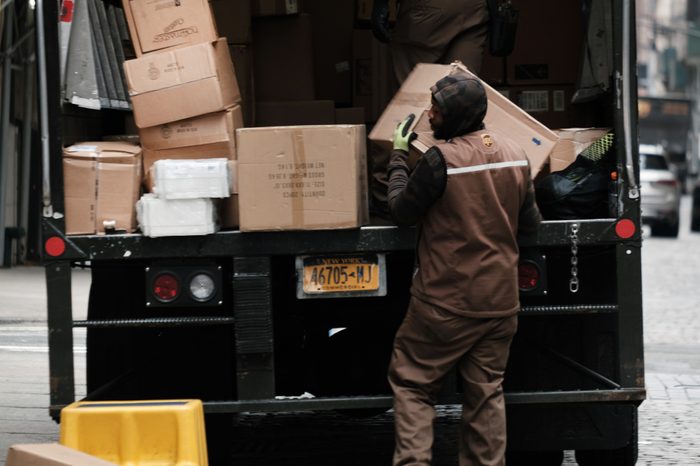
Richard Hooker Jr.: Thank you for having me.
Teddy Ostrow: So I have some basic questions for you. What was this strike authorization vote? What does that actually mean? How did it go down? How did you guys make this happen?
Richard Hooker Jr.: So we got 97% both authorization to go on strike if need be. It doesn’t mean that we’re gonna go on strike. It gives our lead negotiators that extra hammer, that ace in the hole, if you will.
If, you know, UPS says, you know what, man, we don’t care. we can make it without you. Then they can hit ’em and say, “Hey, okay, well if that’s the way you feel, then you need to realize that 97% of our members are looking to go on strike if you don’t come to the table with an agreement that we can agree to.” So that’s what that means. So how it all took place. It was kind of chaotic, you know? I was actually in a meeting with the company and I kept getting phone calls and text messages. Then finally I got a screenshot with this whole strike authorization vote that was starting this week from the UPS app.
And I’m like, what, how, when, how, where, you know, where’s the materials at? So, we had to scramble. Come up with a plan quickly and you know it was successful. Cuz again, that’s what we do. I mean, we are organizers at heart.
So what we did was at our meeting on the following Sunday, we had some people vote there. Then throughout the course of the week, we had gating almost 24/7, cause we wanted to make sure that we got everybody, everybody we could, to send the company a message and to give our negotiators that extra leverage that they needed.
Teddy Ostrow: And you guys clearly sent a message with that 97% authorization vote. So the other thing that happened that was important in the past few weeks is, there was a tentative agreement that was reached on a specific issue, heat protections for package car drivers, other drivers, What was agreed to, and can you speak to why this is such a big deal, but also that still among some drivers there does appear to be some cynicism about what was agreed to?
Richard Hooker Jr.: So, I don’t know all the particulars, but from what I’ve read, there seems to be some type of ambiguity there because it says that on vehicles purchased after January of 2024. So I think that’s where the big confusion is. Are we going to, are all the trucks going to get it?
Or just the one that’s gonna be purchased next year. And in the UPS world, we all know that UPS loves gray areas in the contract. They love where there is no clear cut language that says they have to do something. And you know, this is one of those things where people have died because of heat on the trucks.
And you know, the reason why you see that cynicism is because they don’t believe it. Now. It’s a good start. It’s good to have that language there. I do agree with that, but how does it work? How does it work for the driver? What about the people in the warehouse? What about the people that move the cans from on or off the plane?
They got questions too. They got concerns because you know, nothing against the people on the package cars, our members and brothers and sisters that deliver packages. But I think the people in the warehouse, they want answers on: are they going to get air conditioned, because they passed out.
Some people have died in the warehouse as well. And so, this is one of the things where I think we need to be careful not to continue to put member against member. Because if I’m going to get it in my truck, then what about me in the warehouse? Cause it’s hot in there too. So, I’m hoping that the National Negotiating Committee can answer those questions; there is a call on Wednesday, so hopefully those questions will be answered and those concerns will be addressed.
Teddy Ostrow: Right, right. Yeah. So the new package cars will get air conditioning. It seems like old ones will get some fans.
I think you’re right. There are some questions here. Is there anything else about negotiations or the contract campaign people should know about? At this point I am curious, Richard, what do you think’s gonna happen? Some people are looking at the progress right now and they’re saying, “Oh wow, there could be an early settlement.” Do you think that’s the case?
Richard Hooker Jr.: I’ve heard that. Yeah, man, we hear rumors all the time. Right. But we won’t know anything until we actually see the receipts. I’m under the mindset ever since 2013’s contract to just wait until you get in front of you.
I don’t really like to believe other people or, you know, I want to see it for myself, right? I think that when we get the whole agreement in front of us, we’ll actually read it. Then we’ll be able to decide, is it gonna be an early agreement or are we gonna have to go on strike? But ultimately it’s the member’s choice, you know?
I will say this about the members. We want to see more and hear more about a lot of the issues that affect us day to day; harassment, how they gonna take care of that? Nine fives, how they gonna take care of that, the wages, the catch up rates, raises, sick time, healthcare, pensions, those issues we haven’t heard anything about. This late in the game, I think our members are just getting anxious. They wanna know more about what’s going on, and hopefully this call on Wednesday can address some of those concerns and answer some of those questions.
Teddy Ostrow: Thanks for the update, Richard. Really appreciate you coming on the show.
Teddy Ostrow: I spoke with Richard earlier this week, so I attended the Wednesday contract update call that he mentioned. We didn’t get to talk about it, but what was announced was that the Teamsters have now come to terms with UPS on all the non-economic issues in the contract, and will be moving onto the big ticket economic items, such as wage increases across all classifications, but especially for part-timers, and of course, the abolition of tiers among drivers.
In the call, Sean O’Brien claimed that the economic package they’ve proposed on Wednesday is the biggest in US labor history. We’ll have to wait and see what they proposed and how UPS responds.
But among the 55 changes to the contract agreed on so far are some of the most important demands that we’ve covered in this podcast. Inward-facing surveillance cameras, for example, appear to be limited but not fully removed from the package car.
And of course there’s the heat protections. To clarify what appears to be agreed on right now: like we mentioned, air conditioning would be installed in all new package cars starting in 2024. But all trucks would be retrofitted with two fans, and within 18 months, ventilation and heat shields in the cargo area, which really is where we’ve seen those ridiculous temperatures that have sickened thousands and even killed people over the years. We’re talking about 130 to 150 degrees.
Members I spoke to were concerned that they’ll never see a new package car in their career. UPS just won’t replace them. But the agreement specifies that 28,000 new cars would have to be brought in by the end of the contract. And the states that see the highest heat risk will get new cars first.
Now, one thing I just wanted to emphasize before moving on is that air conditioning — ya know, the thing that workers at most other delivery companies have besides UPS — was inconceivable just a year ago. And the only reason that the Teamsters will now get is because rank and file Teamsters really fought hard for it. Particularly those who started the Safety Not Surveillance campaign at Local 804 in New York, which we covered in episode 4 and in a free bonus episode back in March. While there is skepticism among some members, when I asked some of Teamster activists what they thought about it, they expressed that this is clear case of “when workers fight, they win.”
Now I’m gonna let you in on a secret. You can learn a lot about what some workers are thinking by going on Facebook or other social media. And for the UPS Teamsters this is certainly true. In episode 4 we talked about the Vote No campaign on 2018 contract, which UPSers unequivocally voted down. And we all know what happened: the Teamsters leadership at the time pushed it through anyway.
But that campaign largely grew out of a Facebook page that was started actually for the 2013 contract, called Vote No on the UPS Contract. Over the years, the Facebook page grew to over 25,000 members. And it was actually the organizing that started online there that prompted the shop floor organizing for the Vote No Vote in 2018.
Now, social media is a less than imperfect temperature check of the enormous UPS workforce. But you can learn a lot. Rumors and debates abound.
And recently, when I was scrolling through one of the various facebook pages for UPS Teamsters, I saw a post that garnered a lot of divisiveness. It was quite long and it was written by Greg Kerwood, the local 25 package car driver who joined us on our last episode. The post was on the topic of a strike, and he shared an opinion that I don’t think we’ve heard yet on this show. It was quite impassioned, and I thought it would be important to present it. So I asked Greg to record himself reading it.
Greg Kerwood: It has become almost cliche to say that nobody wants a strike as if it were somehow uncouth to stand up for one’s humanity without a qualifier. But wanting a strike is truly not the question. The question rather is, do we need a strike? And the answer is an unequivocal yes. We need a strike to unite our members at UPS and our Teamsters union as a whole.
We need a strike to create a generation of militant unionists whose education will be the picket line and whose graduation will be the launch of a new labor movement. We need a strike to create the bonds that hold labor together, that unite workers. Those that can only be forged in the furnace of workplace action.
We need a strike to energize the entire labor movement to show workers that they can stand up, that they can fight back, and that they can win. We need a strike to remind the corporations of the world just who generates the record profits they enjoy year after year. Ending this fight without striking at UPS, even with a good contract, would be the labor equivalent of a tie ballgame.
We, as Teamsters, should not be playing for a tie. We should be playing to win. Surely no one believes this company will be taught a lesson or change its behavior without us withholding our labor. If the company is acquiescing to many of our demands out of a fear of a job action and loss of billions, if they’re feeling the heat of a potential strike, then we must push further.
The time has come to finally address the issue, which underlies all others at UPS. Power. Are we going to continue to be owned by this company each day forced to labor until our Lord and master sees fit to let us go? Or are we going to have control over when and for how long we sell our labor? I say the latter until we have a finite workday, both full-time and part-time.
We will continue to be at the mercy of this company and our jobs will continue to dominate our lives. This is not asking for the world. It is simply asking that our employer recognize our humanity. Recognize that we need rest and time to recover. Recognize that we have families and lives outside of work.
Recognize that personal time is not a gift, but a basic human right. Until we have this, we must strike. Make no mistake: striking a multi-billion dollar corporation is not for the faint of heart. It requires strength, commitment, and a willingness to sacrifice in the short term for long-term gain. But I know of no workforce more suited to this task than the men and women who give their blood, sweat and toil to this company day after day, despite being consistently treated as replaceable cogs in a big brown profit making machine.
So the answer is simply this: if you want to change your workplace and your life, if you want to organize Amazon, if you want to empower workers everywhere to join a union and fight back against the abuses of their employer, if you want to swing the pendulum of power away from corporations and back towards the working class, then we must strike.
History is made by those who attempt the impossible, who fight the unwinnable, who believe the unbelievable, who ignore the voices of the naysayers, the pundits, the experts. This is our time to make history to right the wrongs of the last four decades and to return the rewards of labor to those who create them.
If you want your workplace, your life, your community, and your country to be better tomorrow than they are today, we must strike.
Teddy Ostrow: That was Greg Kerwood. On to our interview with Alex Han.
As I said at the top, Alex is a longtime organizer in the labor movement and progressive politics more broadly. He was the vice president of SEIU Healthcare Illinois and Indiana, where helped organize tens of thousands of home-based healthcare and childcare workers. He was a co-founder of the independent political organization United Working Families, and he served on the national political team for Bernie Sanders’ 2020 presidential campaign.
I could continue talking up Alex’s bonafides and honestly I could’ve talked to Alex for hours for this episode. But I think even in this short interview he made clear that what makes this exciting labor moment possible can and should be traced much farther back than the pandemic, or the 2018/2019 teachers strikes, which are usually the explanatory touchstones of 2023. I’m so glad we had him on the show to begin some of that threading, which younger people like me often overlook.
At the center of the interview is the Chicago Teachers’ Strike, which I think I should explain a little. It was a strike by 25,000 teachers in 2012 that more than anything was really about stopping the city from destroying public schools. It was for the broader community. It was an important breaking point because it was an outgrowth of organizational militancy that was brewing years before, and the broader economic and social fallout of the global financial crisis. But it was catalytic for a militant current in the labor movement that would continue to respond to and channel broader trends in the world, while pushed by many of the same people organizations that were involved in 2012.
So, I just wanted to get that out of the way and I also just wanted to tease out a couple acronyms that are used in this interview. First, SEIU, where Alex worked is the humungous Service Employees International Union, which is one of the few unions that actually grew in the 1990s and 2000s. Alex also mentioned the AFL-CIO, that’s the American Federation of Labor, Congress of Industrial Organizations, which is the largest federation of labor unions in the United States. It has traditionally been a very conservative institution, but in the 90s it did take a more progressive turn under the leadership of John Sweeney that coincided with the 1997 strike at UPS. So that’s what Alex is talking about.
Alex Han, thanks for joining me on the Upsurge.
Alex Han: Thanks for having me. Teddy.
Teddy Ostrow: So I’m really excited to have you on because you’ve been a longtime labor organizer for the past 20 years. I think something we’ve missed on this show so far is a tracing of the economic, social, and political themes, and also the organizational legacies between these two high points of Teamster militancy that we have covered on the show.
That’s first 1997 when the Teamsters last struck UPS, and 2023, now, when they may strike the company again. So let’s start in 1997.
How should we understand the context of the Teamsters and labor more broadly at that historical moment?
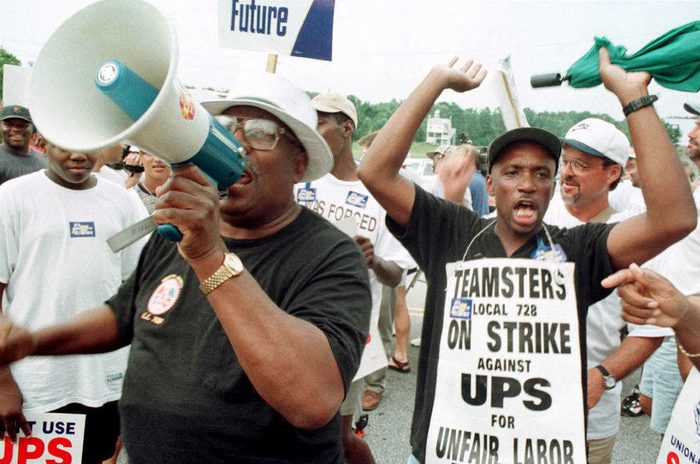
Alex Han: Yeah, I think it’s really important to understand the similarities and differences. I think it’s really important to understand the broader political and economic context that existed, as well as inside the labor movement and inside the Teamsters. So 26 years ago, in 1997, was a couple years into the last kind of reform moment inside the Teamsters, led at the time by Ron Carey, who was the president for the lead up to that big strike in ‘97. That was a movement, similar to now, when Teamsters for a Democratic Union played a critical role in changing the leadership in the Teamsters. It was the first one-member, one-vote election inside the Teamsters union after a decades long reign from forces that were allied with Jimmy Hoffa Sr. It was a time of real hope in the labor movement more broadly, although that was a hope that wasn’t necessarily driven by rank and file workers and members.
So there are some similarities to now. There are some real differences. We’ve got a movement inside the Teamsters that has elected Sean O’Brien, with the support of TDU. We have, more broadly in the labor movement, the first one-member, one-vote election inside the United Auto Workers, which has brought to power a real rank and file driven leadership, led by Shawn Fain, the new president.
One of the differences between ‘97 and the current moment is the atmosphere for organizing now. In ‘97, union density was higher overall in the economy than it is today. But we have things like the organizing at Amazon, that’s really excited people. We have things like the Starbucks workers organizing, a whole lot of, particularly service worker organizing around the country, that has really helped to build excitement inside and outside of the labor movement, and build attention. We have in 2023, we’re several years into the resurgence of the Democratic Socialists of America, which I think are still 70,000 members strong around the country.
In ‘97, you could kind of imagine that as maybe the nadir or the kind of weakest moment for the organized left in American politics. You just reelected Bill Clinton in a really uninspiring campaign, you had a situation in which the horizons for the American left were much, much smaller, than they are today.
Today we still sit in the wake of two campaigns for President from Bernie Sanders. You have a real dynamism on the organized left that you didn’t have in the mid to late nineties.
So in short it was like a somewhat stronger labor movement overall, frankly, you know, bigger numbers, bigger percentages. Labor unions represented a bigger percentage of workers in the economy. But you didn’t have the kind of dynamic organizing campaigns that are really visible, that you’ve seen today.
So there are some parallels. There are some real differences. But in a lot of ways that strike was coming at what people saw as a low point at that time in the labor movement.
Teddy Ostrow: Yeah, and I might add that at least another similarity is just the state of working America. I mean, the reason why that strike was so successful, one of the reasons was because of public support, right.
Things have gotten pretty dark, by 1997 in corporate America for working people. And I think you could say, in some ways it’s gotten worse, especially since 2020 at the beginning of what people may view as a new moment, a new day for labor. But maybe we can start threading those two moments together.
How, how did we get from 1997 to now? We can’t cover everything right now, but what do you see as the key forces, the key movement moments that show their legacy in our labor movement today, that helped shape the possibility for a strike of 350,000 Teamsters potentially in August?
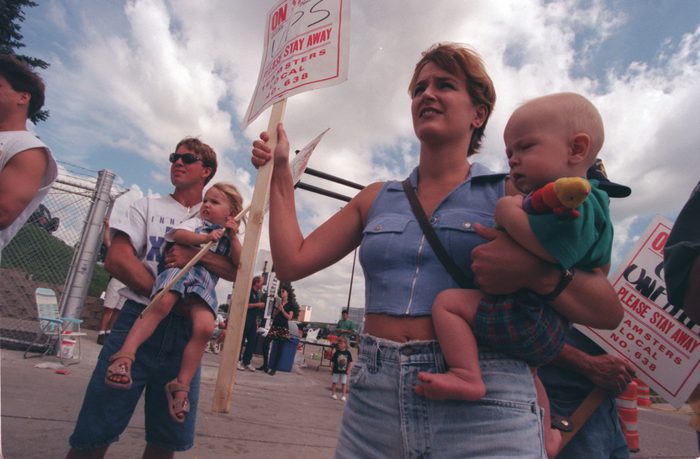
Alex Han: I would want to start out of 1997, an enormous fight. I think at that point the Teamster’s membership at UPS was something around 180,000, right? So significantly smaller than it is now, but still a really gigantic number of people to be on strike. The messaging of that strike was around “part-time America won’t work.” And so I think that was, roughly two decades into de-industrialization, a set of economic recoveries in the nineties that were really best felt as recoveries on Wall Street. For a lot of Americans, unemployment had gone down, but a lot of that was a result of people having to work two and three jobs to make it, which was something that was not brand new, especially for women workers who are heads of household, especially for immigrant workers, for black workers. But I do think in some ways it was something new for a broader set of workers, and for white men, for people who hadn’t necessarily felt that kind of hit under the post-war economic expansion.
And so the ‘97 strike really also inspired, whether directly or indirectly the kind of key, critical organizing of the global justice movement that kind of came to a peak in 2000 and 2001, protests around the World Trade Organization, around the International Monetary Fund in World Bank. There was a set of growing alliances between environmentalists and labor unions. Things like the BlueGreen Alliance, that was the steel workers and environmental groups. I remember one of the phrases around the World Trade Organization protests in 1999 was Teamsters and Turtles together.
So it was really thinking about some hope for a broader movement that could really link together some of these fights. I would say that the Teamsters UPS strike in ‘97 was a critical piece, a national fight that had 90% support, a strike that really was seen as something that cut to the heart of some of the challenges of that economic recovery. So I think we’re seeing reflections of that in the issues that exist today. Like that is still an enormous issue, right? Part-time workers and their treatment, in addition to all the concerns around workplace safety, an expectation of more and more work, for the same pay. So I think that, the previous Teamster strike really helped juice a bigger movement that was forming around economic justice issues globally.
The terrorist attacks of 9/11 really created a line of demarcation between what happened before and what happened after.
So I think a lot of what we’re talking about organizationally on the American left in the labor movement in the years after that was really around ways to make a set of strategic interventions. The new leadership in the AFL-CIO of the mid nineties,it was seen by a lot of people as this progressive struggle inside the AFL-CIO in a lot of ways.
It was, but at the same time, a leadership fight inside the AFL-CIO doesn’t engage rank and file union members. It certainly doesn’t engage the hundreds of millions of other people in the country who are not members of a labor union. So you saw things like the rise of SEIU, my old union — I was an officer of an SEIU local here in Chicago for over a decade — really bearing down on what we thought of as the most strategic organizing that we could do, in a political atmosphere that was not conducive to workers building power.
In the wake of the next economic crisis in 2008, I think we’ve seen a real rekindling of something different that’s helped to grow into the moment today.
I think we can see the results of that: Occupy Wall Street, the movement particularly centered around teachers and teachers unions, really started with the 2012 Chicago Teachers’ Strike, and rolling through statewide strikes in places like Arizona, West Virginia, Oklahoma in the last several years. I think all of those things helped to feed and were fed by bigger political campaigns like Bernie Sanders’ two campaigns for president.
I think obviously right now we’re functioning in a place where, what’s happened internally inside the Teamsters union is certainly the biggest impetus for this, right? The last contract bargaining — it was not just that members saw it as a sellout, but it was the forcing of a contract onto a membership that the majority of whom had not voted to approve that contract.
So I think we see an intersection of the forces inside the union, being able to create a majority constituency inside the union for a bigger fight. While across the kind of economy and in a bigger narrative, you also have an openness for people to see workers in motion, as being something that gets broad public support.
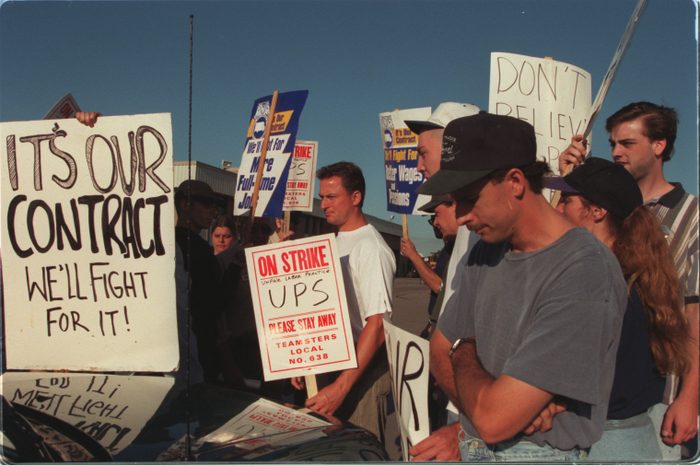
Teddy Ostrow: That was a great summary. I wonder if we could dig into some of the specific instances for a second. We had talked before, and you had mentioned massive protests, for immigration reform in 2006. That’s something people around my age probably don’t remember at all.
But you explained right that this funneled right into something that some may not consider as connected, the Chicago Teachers’ Strike, which maybe is worth explaining a little bit. And then that funneling right into the Bernie campaign, which is generally considered something to do with Occupy Wall Street, the energy coming from there.
This was something that I didn’t quite understand — these organizational legacies, but also, legacies emanating from movements that expanded beyond any one organization.
Alex Han: Yeah, I think that there are a set of different links and I’m glad you brought that back up, Teddy.
One of the big, I wouldn’t say forgotten because the movement for immigrant rights, largely immigrant workers, is something that has taken on different shapes and forms over the decades and going back much before 2006. But that was really sparked by some attempts on the Right, with the partnership of Democrats like Rahm Emanuel, corporate Democrats, to create an immigration reform that was going to be extremely punitive to workers, and very rewarding to bosses. So we saw the 2006 uprising, a day without an immigrant, the revival of mayday. In a lot of ways, like in Chicago, on May 1st, 2006, there were upwards of a million people in the street marching for humane immigration reform.
That was the closest that we’ve come in modern memory to something that could be considered a general strike. If a million people don’t go to work in a metro area of 10 million people, that is a gigantic number and it has huge knock-on effects. It was an amazing show of power, and power in different ways. The power of workers to make those decisions. The power of the media, and particularly at that moment, Spanish language media, to help move people into action.
That fight in Chicago really did lead to a set of other developments over the next couple of years: the development of a really strong militant movement, particularly around young, undocumented people, to push for immigration reform that went further than any proposals that had been put forward, to that point in Congress. It led into, in 2018 in Chicago, right in the wake of the financial crisis and right after Barack Obama’s election, the occupation of a window and door factory called Republic Windows by its workers, largely immigrants, who were under threat of their jobs being shipped away overnight. Workers occupied that plant for eight days. They won all of their demands of getting their prior pay and ended up over the next year or two, actually taking ownership of the equipment of their plant and creating a cooperative window and door factory on the southwest side of Chicago.
That was a struggle that I think really inspired a lot of Chicago, energy that ended up being crystallized during the Occupy Wall Street movement. In the fall of 2011, there were members of a community organization on the south side called South Side Together Organizing for Power that came to the occupation of Republic Windows and Doors. A lot of the way that Allies interacted with it was by bringing food and bringing supplies to that plant occupation. Those leaders in Southside Together Organizing for Power in 2011 embarked on an occupation of a set of mental health clinics in the city of Chicago that were under threat of closure.
That was again, really amplified by the Occupy Wall Street movement. and was all a part of a bigger labor and community movement in Chicago that was really linking together. Teachers, other public sector workers and some of these neighborhood based and constituency based fights for justice that ended up culminating in that strike of 25,000 teachers in the fall of 2012, the first time that teachers in Chicago had struck in over 25 years and probably the largest scale, strike that we’ve seen of teachers in several decades. Many teachers around the country don’t have the right to strike, and so that Chicago Teachers’ strike, I think in turn, you know, fed off of that occupy Wall Street movement off of those movements against economic inequality, but also helped to create a broader current inside the labor movement that we are still feeling the impact of today.
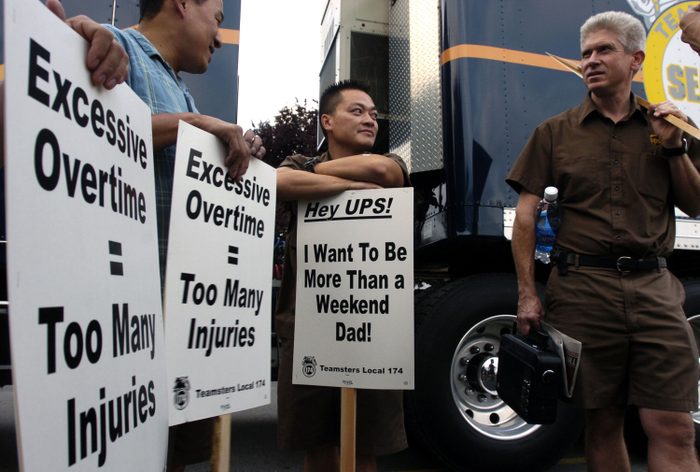
Teddy Ostrow: Yeah, I think, right, we can see that expectations were raised for a lot of people and that moment really funneled into the Bernie Sanders campaign, which seemed to electrify a lot of young people, funneled them directly into Democratic Socialists of America, which is playing a role today in several of the high profile fights, but also, maybe in the subterranean struggles we have yet to really see come public.
I just wanna bring us up to 2018, 2019, because I feel like a lot of people like to trace the energy that we’ve seen in the past three years to Covid-19, the introduction of this pandemic, which clearly has played a role, but a couple years before that, we saw something come out of Bernie’s campaign, something come out of 2012 in Chicago, in this explosion of teacher strikes.
Can you explain how that played a role, where that came from, and how that’s played a role in what we’re seeing today?
Alex Han: Well, the 2012 Chicago Teachers’ Strike really was the first event in what’s now an over a decade-long movement, really in a lot of ways, that put K-12 education workers at the forefront of a new militant labor movement.
That strike was a result of the election of a rank and file caucus two years prior. The caucus rank and file educators, a group of teachers and union members who really had deep relationships with other social movements and other activists, from immigrant rights to what became the movement for Black Lives, to many others.
That strike helped to inspire movements around the country. And there’s actually a direct line. Eric Blanc’s book is called Red State Revolt, about these statewide teacher strikes in 2018 and 2019. One of the leaders of that in Arizona, a teacher named Rebecca Gelli, had moved from Chicago after her really foundational experience in 2012.
She looked around at the union that she was a part of in Arizona and said, “Why don’t we fight the way that we fought in Chicago? Why don’t we talk about, not just our own issues, but why don’t we talk about the broader community issues and put all these things in context together? And why don’t we, why can’t we take a sharper action?”
It’s really interesting, if you dig into some of the organizers and the leaders of the statewide strike in West Virginia, the statewide strike in Oklahoma and Arizona, of actions that took place in Indiana and Kentucky and a host of other states, the crossover with teachers who were really vocal leaders in the Bernie campaign in 2016; the crossover between teachers who would be very involved in broader labor for Bernie efforts in 2020, are very clear. But you can see a line that you can trace through specific people like Rebecca and others, through all of those fights into really the creation of a current inside the teachers’ union movement, that I think is still to be seen the limits of that. You’ve had teachers go on strike most recently in Oakland, California. You’ve had multiple strikes in Los Angeles, Minneapolis, Minnesota, St. Paul, Minnesota, you’ve had rank and file caucuses win victories and teachers unions from Boston to Baltimore, to up and down the West Coast. I think that there is a relationship between all of these and the current moment that we’re in. You saw a lot of those unions take action early in the pandemic, to protect students, to protect workers, to protect communities, you know, fighting for a safe return to school, early in the pandemic, fighting against kind of politicians, really trying to force people in back into work and work back into school for political reasons. So I think there’s obviously a lot to be said about the impact of the pandemic. But these things were all in motion long before the pandemic arose.
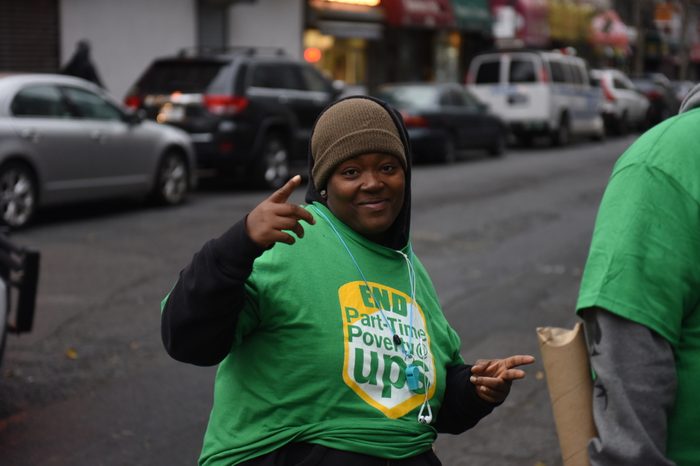
Teddy Ostrow: We’ve seen the impact of Amazon and its relationship and stranglehold to some degree on the logistics and delivery chain, in the United States and globally. That was something that was supercharged by the pandemic, but the outlines of that impact were very clear beforehand.
Alex Han: It was also clear that these things were going to be on a collision course. So obviously, a militant Teamsters union that was ready to fight and ready to communicate their willingness to fight, was really critically needed, for workers much more broadly, than those who were represented by the Teamsters at UPS.
Teddy Ostrow: Yeah. And I think each of these unions that we had previously discussed, the UAW, the Teamsters, which, you know, are undergoing reforms right now, or at least greater militancy, the legitimacy lent to the reformers in those unions came from the expectations raised before the pandemic and after the pandemic, when we reach a breaking point, among different people including everyone from teachers to logistics workers who were put on the front lines of something that could lead to death.
I wanna move back actually in time, well, not quite exactly, but something you were involved in, right?
In 2012, the Chicago Teachers’ strike, you were at SEIU at the time, but something I think is really important that we haven’t touched on in this show is what’s called Bargaining for the Common Good. This is both a specific network you were involved in in Chicago, or are involved in, but it’s also a greater framework for labor unions to use their leverage beyond the workplace specifically.
This isn’t something we’ve seen much of yet in the Teamsters Union. We are starting to see it. But in closing, can you explain what Bargaining for the Common Good is? What should we learn from that strategy? And why is it so integral to not only a successful labor movement, but also to successful social justice movements, more broadly?
Alex Han: Yeah, I, I think the, the simple answer to what Bargaining for the Common Good is that it’s a framework in which workers use their leverage to win victories that go much more broadly than the bargaining unit. Bargaining for the Common Good in the way that I think of it is really bringing things back to some of the core of what the labor movement was and what it represented at the times of its greatest expansion and the times of its greatest impact.
The labor movement certainly wasn’t unified in its approach to the Civil Rights movement, but unions like the UAW were critical elements of a coalition to help build a civil rights movement in this country.
I think back through the history of the Teamsters to the 1934 general strike in Minneapolis, Minnesota, that was launched by Teamster truck drivers, local delivery drivers, where their purpose was not “can we win the best deal for our members?” Their purpose was really in thinking about their leverage as workers, as workers who are delivering goods, in being able to create a much bigger battle.
So in a lot of ways, labor exists in a legalistic framework that was not designed in order to build worker power. It was designed at best in a compromise, to be able to create a predictable environment for capital to exist in and grow.
When we think about Bargaining for the Common Good, we’re also thinking about breaking out of some of those legalistic frameworks that have been forced on workers that have been forced on unions, but that have existed for so long that some people think of it as, it’s how the sun rises and the sun sets: “That’s just how things are.”
But that’s not how things are. That’s not how things have been at the moments when workers have created the biggest change, both in their own conditions and much more broadly for the community. I do think of the ‘97 strike as a moment where the Teamsters were Bargaining for the Common Good.
There’s no other way around it to say that part-time America isn’t going to work. That was something that reverberated much more broadly, just like I think some of the ways that they’re messaging and communicating the issues that they face, those are issues that directly and indirectly impact millions and millions of other workers.
When we have a big enough chunk of workers in the right place who are able to improve their own living standards, the fate of every worker in logistics is tied to what happens at UPS.
So I don’t like to think of Bargaining for the Common Good as something that is separate from what workers want, what workers need, and the tactics that actually are going to help them win. Because it is true that creating that kind of public opinion where 90% of the public support pushing in that way, is a part of what is going to help workers win in a fight like this right now.
Teddy Ostrow: Alex Han, thanks for joining me on the Upsurge.
Alex Han: All right, thanks, Teddy.
You just listened to episode 9 of The Upsurge.
The Upsurge is produced in partnership with In These Times and The Real News Network. Both are nonprofit media organizations that cover the labor movement closely. Check them out at inthesetimes.com and therealnews.com where you can also find an archive of all our past episodes.
You can also show your support by sharing the episode on social media, giving us a five star rating and writing a review.
Follow us on Twitter @upsurgepod and Facebook, The Upsurge. You can also listen to us on our YouTube channel, The Upsurge.
But the best way to show your support is by becoming a patron of the show at patreon.com/upsurgepod. We are listener-supported and can’t continue without you. Please help us get to 100 subscribers by July.
Hosted by Teddy Ostrow
Edited by Teddy Ostrow
Produced by NYGP & Ruby Walsh, in partnership with In These Times & The Real News
Music by Casey Gallagher
Cover art by Devlin Claro Resetar
**
Support the show at Patreon.com/upsurgepod.
Follow us on Twitter @upsurgepod, Facebook, The Upsurge, and YouTube @upsurgepod.
Teddy Ostrow is a journalist from Brooklyn covering labor and economics. He is the host of The Upsurge podcast and his work has appeared in The Nation, The New Republic, and elsewhere. Follow him on Twitter @TeddyOstrow.
Ruby Walsh is an audio producer from Brooklyn. She is a co-producer of The Upsurge podcast and a development producer for Giant Grin LLC. Formerly, she was the associate producer of Moyers on Democracy and wrote for BillMoyers.com.
